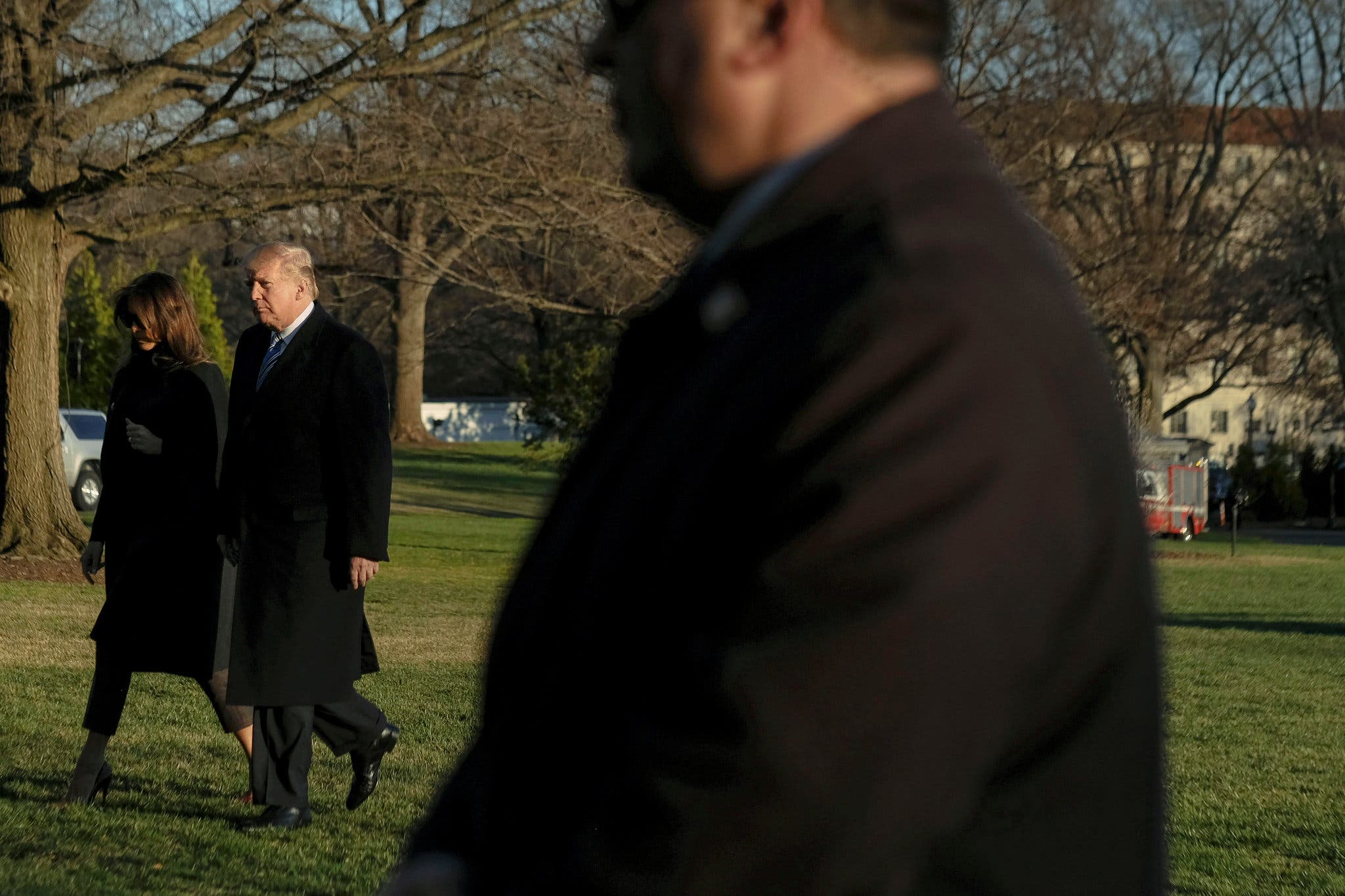Assessing The Effects Of Trump's Tariffs On US Industries.

Table of Contents
The implementation of tariffs under the Trump administration significantly impacted various US industries. This article analyzes the multifaceted consequences of these trade policies, examining both the intended benefits and the unforeseen repercussions. We'll explore the winners and losers, and ultimately assess the long-term economic impact of Trump's tariffs.
<h2>Impact on Specific Industries</h2>
Trump's tariffs had a dramatically uneven impact across different sectors of the US economy. Some industries experienced short-term gains, while others suffered significant losses. Let's examine some key examples:
<h3>Steel and Aluminum</h3>
The imposition of tariffs on steel and aluminum imports aimed to protect domestic producers and bolster American jobs. While this led to increased domestic production in some sectors, it also resulted in several negative consequences.
- Increased prices for downstream industries: Industries relying on steel and aluminum as inputs, such as automotive manufacturing and construction, faced higher material costs, impacting their profitability and competitiveness.
- Retaliatory tariffs from other countries: The tariffs provoked retaliatory measures from trading partners, leading to increased costs for US exporters and harming industries like agriculture.
- Job creation vs. job losses – a nuanced analysis: While some jobs were created in the steel and aluminum sectors, the overall impact on employment remains a subject of debate. The price increases caused by the tariffs led to job losses in downstream industries, offsetting some of the gains in the primary metal sectors.
- Examination of the long-term competitiveness of the US steel and aluminum industries: The tariffs provided a temporary shield, but questions remain about the long-term competitiveness of these industries in a global market without ongoing protectionist measures.
<h3>Agriculture</h3>
The agricultural sector was severely impacted by Trump's tariffs, primarily due to retaliatory tariffs imposed by China and other trading partners.
- Significant impact due to retaliatory tariffs from China and other trading partners: China, a major importer of US agricultural products like soybeans and pork, imposed significant tariffs in response to the US tariffs, severely impacting farmers' incomes.
- Government subsidies to mitigate losses: The government implemented subsidy programs to assist farmers facing financial hardship due to the trade war. However, the effectiveness of these programs is still debated.
- Impact on farmers' incomes and the overall agricultural economy: Many farmers experienced significant income losses, leading to farm closures and economic hardship in rural communities.
- Analysis of the effectiveness of government support programs: The effectiveness of government subsidies in offsetting the negative effects of the tariffs remains a point of contention among economists.
- The long-term sustainability of the agricultural sector in the face of trade wars: The experience highlighted the vulnerability of the agricultural sector to disruptions in global trade and the need for diversified markets and resilient trade policies.
<h3>Manufacturing</h3>
The impact of Trump's tariffs on the manufacturing sector was mixed, with some sectors benefiting and others suffering.
- Mixed effects, with some sectors benefiting from increased domestic demand while others struggled with higher input costs: Sectors producing goods that directly competed with imported products benefited from increased domestic demand, while those reliant on imported inputs faced higher costs, hindering their competitiveness.
- Shift in supply chains and relocation of production to avoid tariffs: Companies shifted their supply chains to avoid tariffs, leading to job losses in some US manufacturing sectors and increased production in other countries.
- Impact on consumer prices and inflation: The tariffs contributed to increased prices for many consumer goods, fueling inflation.
- Case studies of specific manufacturing sectors (e.g., textiles, electronics): Examining specific sectors reveals the varying impact of tariffs, with some experiencing significant negative effects, while others managed to adapt.
- The impact on small and medium-sized manufacturing businesses: Small and medium-sized enterprises (SMEs) often lacked the resources to navigate the complexities of the trade war, suffering disproportionately.
<h2>Economic Consequences of Trump's Tariffs</h2>
The economic consequences of Trump's tariffs extended beyond specific industries, impacting the broader economy in several ways.
<h3>Inflation and Consumer Prices</h3>
Tariffs directly increased the price of imported goods, leading to higher consumer prices.
- Increased prices of imported goods due to tariffs: Tariffs added directly to the cost of many imported goods, impacting consumers' purchasing power.
- Impact on consumer spending and overall economic growth: The increased prices dampened consumer spending and contributed to slower economic growth.
- Analysis of inflation rates during and after the tariff implementation: Economic data shows a clear correlation between the implementation of tariffs and increased inflation rates.
- Comparison with inflation rates in other countries: Comparing inflation rates in the US with those in other countries provides context for assessing the impact of Trump's tariffs.
<h3>Trade Deficits</h3>
A central argument for the tariffs was their potential to reduce the US trade deficit. However, the evidence is mixed.
- Did tariffs reduce the trade deficit? Examining the actual data: While some sectors saw reduced imports, the overall impact on the trade deficit was not significant and in some cases even negative.
- Impact on global trade relationships: The tariffs severely strained relationships with major trading partners, leading to increased trade tensions.
- Analysis of the effectiveness of tariffs in reducing trade imbalances: The data suggests that tariffs were not an effective tool for significantly reducing trade imbalances.
- Discussion of the potential for trade wars to escalate: The retaliatory tariffs highlight the risks of escalating trade wars and their detrimental impact on global trade.
<h3>Impact on Global Trade Relations</h3>
Trump's tariffs significantly strained relationships with major trading partners like China and the European Union.
- Strained relationships with major trading partners (e.g., China, EU): The tariffs led to significant diplomatic tensions and damaged international cooperation.
- Retaliatory tariffs and trade disputes: The imposition of tariffs triggered retaliatory measures, escalating trade disputes and harming multiple economies.
- The long-term consequences for international cooperation and global trade: The damage to international trust and cooperation could have long-lasting effects on global trade.
- Analysis of the impact on international trade organizations (WTO): The tariffs challenged the authority and effectiveness of the World Trade Organization (WTO).
<h2>Long-Term Effects and Future Implications</h2>
The long-term effects of Trump's tariffs are still unfolding, but several key implications are evident.
- Assessing the lasting impact on US industries and the broader economy: The long-term competitiveness of certain industries remains questionable, and the overall impact on economic growth is still being analyzed.
- The role of tariffs in shaping future trade policy: The experience of Trump's tariffs has sparked debate about the effectiveness and long-term consequences of protectionist trade policies.
- Potential for future trade negotiations and agreements: The strained relationships resulting from the tariffs will likely complicate future trade negotiations.
- The influence of Trump's tariff policies on subsequent administrations: The policies implemented under the Trump administration will likely influence future trade policy decisions.
<h2>Conclusion</h2>
Trump's tariffs had a complex and far-reaching impact on various US industries, resulting in both benefits and significant drawbacks. While some sectors experienced short-term gains, others faced considerable challenges, including increased costs, reduced competitiveness, and retaliatory tariffs. The long-term economic consequences remain a subject of ongoing debate and analysis. Understanding the multifaceted effects of Trump's tariffs is crucial for informing future trade policies and mitigating potential risks. For further in-depth analysis on the lasting impact of Trump's tariffs on the US economy, continue your research using reliable economic data sources such as the Congressional Research Service, the Bureau of Economic Analysis, and the World Trade Organization.

Featured Posts
-
 Gypsy Rose Life After Lockup Season 2 Episode 4 Free Streaming Options Where To Watch Legally
May 06, 2025
Gypsy Rose Life After Lockup Season 2 Episode 4 Free Streaming Options Where To Watch Legally
May 06, 2025 -
 Warren Buffett And Apple Deconstructing A Successful Investment Strategy
May 06, 2025
Warren Buffett And Apple Deconstructing A Successful Investment Strategy
May 06, 2025 -
 Mamlvo Azatvo Tyan Sahmanapakvo M Bbc N Lqvo M E Adrbyejany
May 06, 2025
Mamlvo Azatvo Tyan Sahmanapakvo M Bbc N Lqvo M E Adrbyejany
May 06, 2025 -
 The Truth Amanda Holden On The Whispers After Her Split With Les Dennis
May 06, 2025
The Truth Amanda Holden On The Whispers After Her Split With Les Dennis
May 06, 2025 -
 How To Get Sabrina Carpenter Skins In Fortnite
May 06, 2025
How To Get Sabrina Carpenter Skins In Fortnite
May 06, 2025
